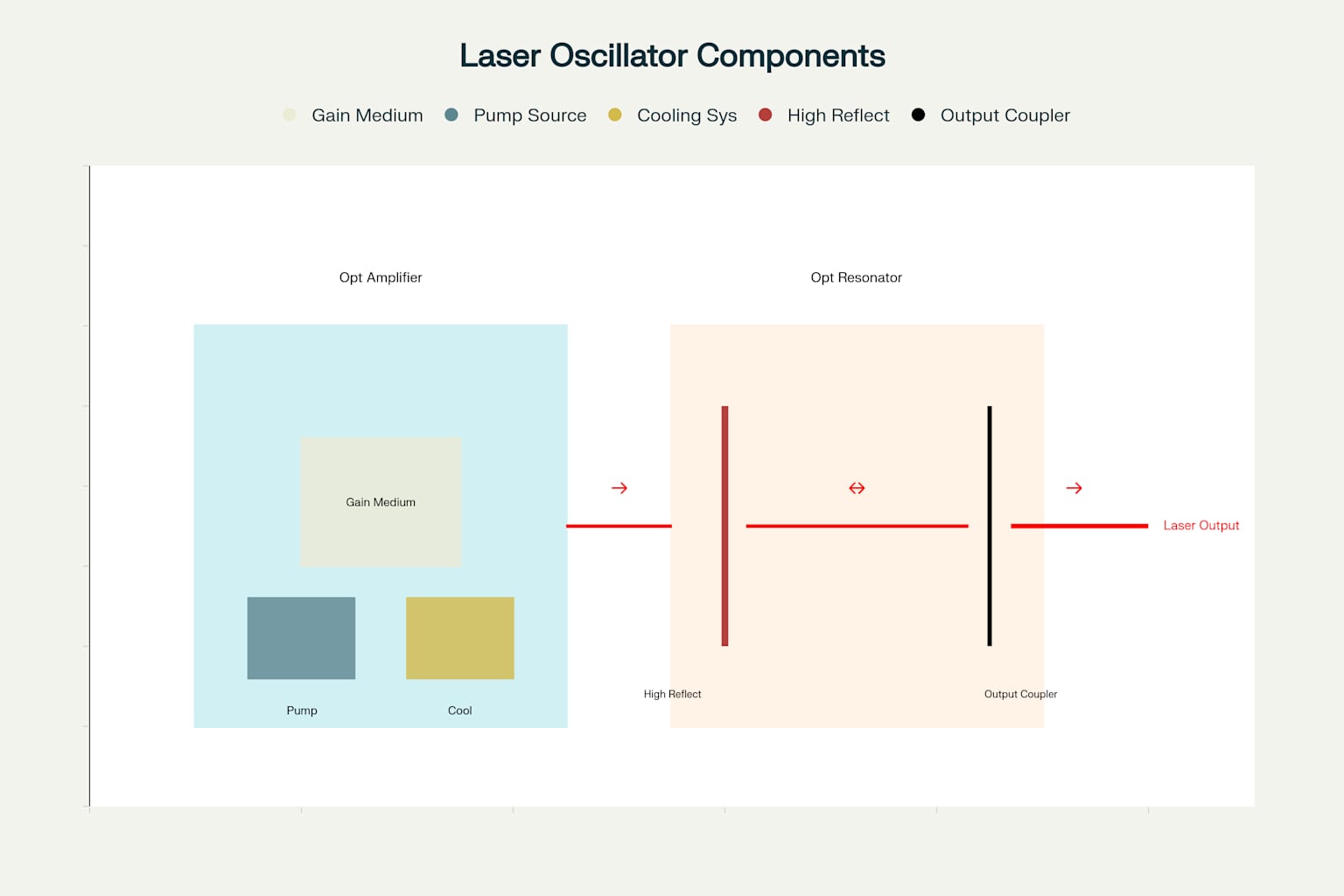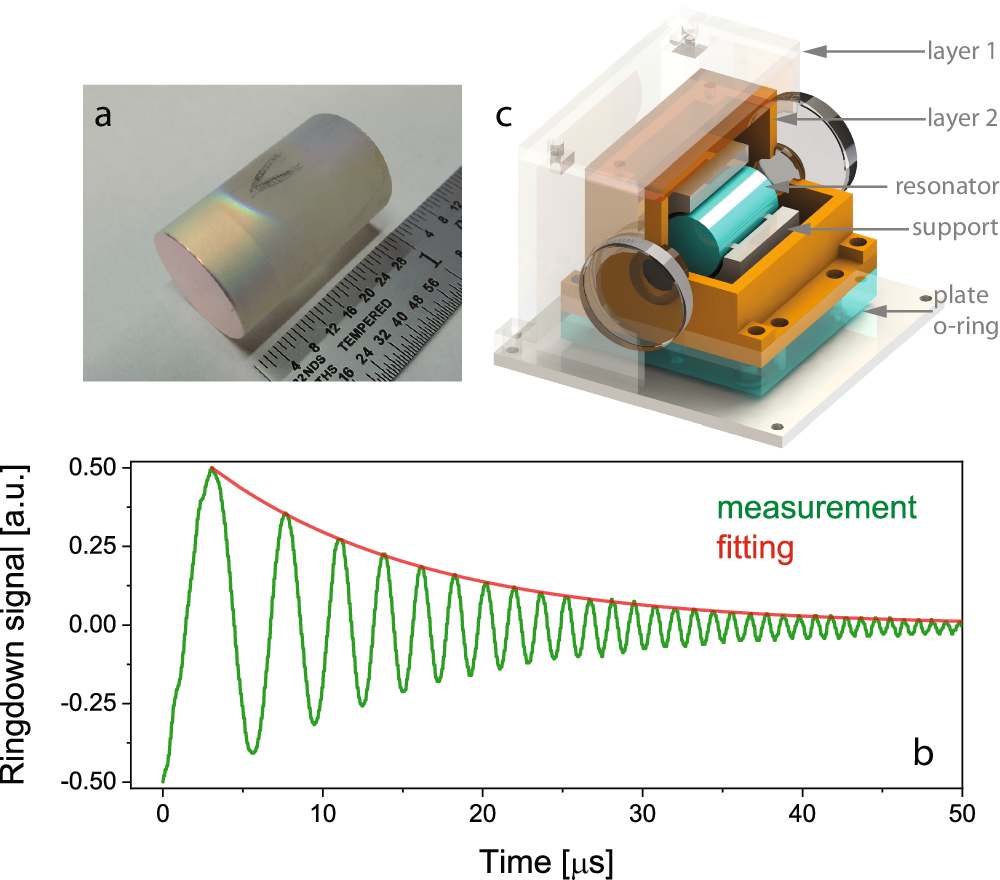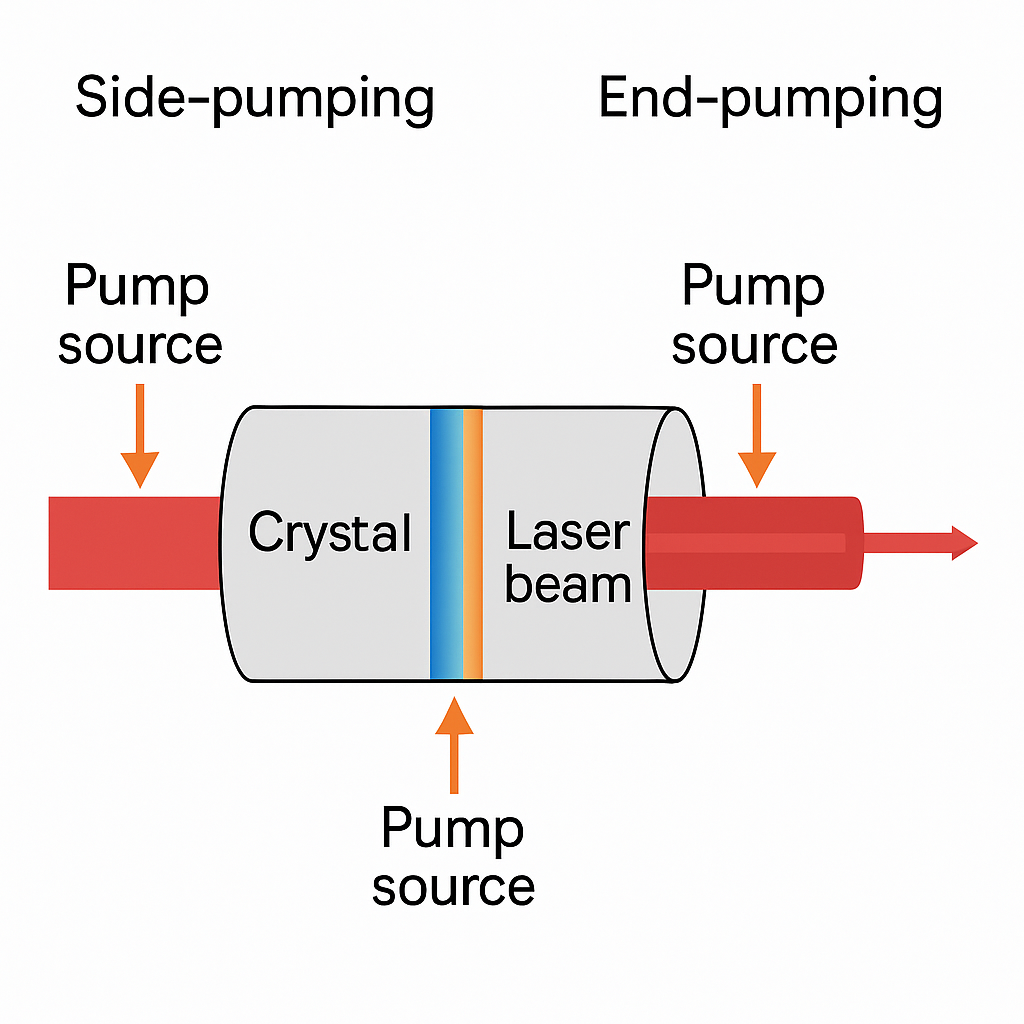Laser oscillators are sophisticated optical systems. They form the foundation of modern coherent light generation technology. These devices work via synergistic interaction of two fundamental subsystems. The subsystems work in concert to produce stable, amplified electromagnetic radiation. Understanding the intricate relationship between these components gives essential insight. It shows how laser systems achieve remarkable performance characteristics.
The fundamental architecture of any laser oscillator relies on integration of two critical subsystems: an optical amplification system and an optical resonant cavity. This dual - component design transforms incoherent pump energy into highly organized, coherent laser radiation. It uses carefully controlled feedback mechanisms. The seamless interaction between these subsystems determines overall performance, efficiency, and output characteristics of the laser system.
The optical amplification component acts as the active energy conversion system. External pump energy excites the gain medium. This creates population inversion necessary for stimulated emission. Meanwhile, the resonant cavity provides selective feedback mechanism. It shapes electromagnetic field distribution and determines spectral, spatial, and temporal properties of the output beam.

Modern laser oscillators achieve exceptional performance through precise engineering of interaction between amplification and resonance. The quality factor and finesse of the resonant cavity directly influence threshold conditions for laser operation and overall efficiency of energy conversion. Advanced designs include sophisticated thermal management, precise optical alignment, and optimized feedback control. They maximize performance while maintaining operational stability.
The optical resonator forms the backbone of laser oscillation via its selective feedback mechanism. It’s typically implemented using two precisely aligned mirrors. The mirrors are positioned perpendicular on optical axis of the gain medium. These mirrors create a standing wave pattern. It reinforces specific electromagnetic modes while suppressing others. This establishes conditions necessary for coherent laser operation. The mirror configuration determines fundamental laser characteristics. These include beam quality, output power, and spectral purity.
One mirror usually shows near - total reflectivity. This maximizes energy retention on the cavity. The opposing mirror maintains partial transparency. This enables controlled energy extraction. This asymmetric reflectivity configuration optimizes balance between internal energy buildup and useful output power. The precise reflectivity values are carefully selected based on gain characteristics of the amplification medium and desired output parameters.
The most common resonator configuration uses the Fabry - Perot interferometer design. It features two parallel reflective surfaces. They create multiple - beam interference patterns. This arrangement supports specific longitudinal modes. They’re determined by cavity length and wavelength of the circulating radiation. The Fabry - Perot configuration enables precise wavelength selection. It maintains phase relationships necessary for coherent amplification.
The resonator maintains electromagnetic field distribution through constructive interference of waves. These waves satisfy the cavity's resonance conditions. Losses within the system are continuously compensated by stimulated emission from the gain medium. This creates a stable oscillating condition. The spectral, directional, and spatial properties of the laser output are fundamentally determined by resonator geometry and mirror characteristics.

Fabry - Perot resonators support multiple longitudinal modes within gain bandwidth of the amplification medium. The mode spacing and selection depend on cavity length, mirror reflectivity, and dispersion characteristics of the intracavity medium. High - quality resonators achieve single - mode operation through careful design of cavity parameters and selective feedback mechanisms.
The beam quality and spatial coherence of the laser output directly correlate with mode structure supported by the resonator. Advanced resonator designs include mode - selection techniques. They ensure fundamental mode operation. This maximizes beam quality and focusability. The interaction between gain distribution and resonator modes determines overall efficiency and performance characteristics of the laser system.
The optical amplification system creates population inversion necessary for stimulated emission. It does this through controlled energy transfer to the gain medium. External pump sources provide energy required to elevate atoms or molecules to excited states. There, they can subsequently contribute to coherent light amplification. The efficiency of this energy transfer process directly impacts overall laser performance. It determines threshold requirements for oscillation.
Energy storage within the gain medium happens through accumulation of excited particles at upper laser levels. The lifetime of these excited states and cross - sections for stimulated emission determine gain characteristics and amplification potential of the medium. Proper thermal management ensures stored energy can be efficiently extracted. It also maintains structural integrity of the gain material.
Laser systems use various pumping techniques to achieve population inversion. Optical and electrical pumping are the most common approaches. Optical pumping uses high - intensity light sources to selectively excite the gain medium. Electrical pumping directly injects current through semiconductor materials. The choice of pumping method depends on gain medium characteristics, desired output parameters, and system design constraints.
Side - pumping configurations introduce pump radiation perpendicular on laser beam direction. This enables use of high - power, low - spatial - coherence sources like flash lamps or diode arrays. This approach facilitates efficient energy coupling. It allows distributed pumping along the length of the gain medium. Side - pumping systems typically include reflective pump chambers. They redirect scattered pump light back into the gain material. This improves overall efficiency.

End - pumping or longitudinal pumping introduces pump radiation along same optical axis as the laser beam. It typically uses highly directional sources like laser diodes. This configuration offers superior beam quality and higher efficiency for many applications. Especially those requiring modest output powers. End - pumped systems benefit from better spatial overlap between pump and laser modes. This results in more efficient energy extraction and improved beam characteristics.
Pump chambers are sophisticated mechanical assemblies. They integrate the gain medium, pump sources, cooling systems, and optical components into a unified package. These assemblies must withstand thermal and mechanical stresses associated with high - power operation. They also must maintain precise optical alignment. Advanced pump chamber designs include materials with excellent thermal conductivity and low thermal expansion. This minimizes thermal lensing effects.
Cooling systems within pump chambers use forced convection. They typically employ water or other suitable coolants circulated through carefully designed flow channels. The cooling system must efficiently remove waste heat. It must avoid interference with the optical pumping process. Flow tube arrangements protect the gain medium from direct contact with coolant. They also maintain effective heat transfer.
Pump chambers include sophisticated reflector systems. They maximize efficiency of pump light utilization. Elliptical reflector configurations position the pump source and gain medium at focal points of an elliptical surface. This concentrates pump radiation into the gain material. Alternative designs use diffuse reflectors with high reflectivity coatings. They provide uniform illumination of the gain medium.
The reflector materials and coatings must withstand intense radiation and thermal conditions present during operation. Gold - plated surfaces provide excellent reflectivity and thermal stability for many applications. Ceramic - based reflectors offer superior durability under extreme conditions. The choice of reflector system depends on specific requirements of the laser application and characteristics of the pump sources.
Modern pumphead assemblies integrate all critical components. These include the laser crystal, pump sources, cooling channels, and electrical connections into compact, reliable packages. These modular designs facilitate system assembly, maintenance, and upgrading. They also ensure consistent performance characteristics. Pumphead designs must accommodate specific requirements of different gain media and pumping configurations.
The mechanical design of pumpheads addresses issues of thermal expansion, vibration isolation, and long - term stability. Precision mounting systems maintain optical alignment under varying thermal and mechanical conditions. Advanced pumphead designs include active feedback systems. They compensate for thermal effects and maintain optimal performance.
Laser oscillation occurs when round - trip gain within the resonator exceeds round - trip losses. This establishes the fundamental threshold condition for laser operation. The gain must compensate for losses due to mirror transmission, absorption, scattering, and other dissipative mechanisms within the system. The precise threshold requirements depend on gain cross - section of the medium, cavity geometry, and quality of optical components.
Spontaneous emission provides initial seed photons that initiate the amplification process. Once threshold conditions are satisfied, stimulated emission becomes the dominant process. This leads to exponential growth of the intracavity field. The transition from below - threshold to above - threshold operation represents a critical phase change in system behavior.
The overall efficiency of laser oscillators depends on quantum efficiency of the gain medium, efficiency of pump absorption, and extraction efficiency of stored energy. Thermal effects impose fundamental limitations on power scaling. Excessive heating can degrade beam quality and potentially damage system components. Advanced cooling techniques and thermal management strategies enable higher power operation. They also maintain performance specifications.
Power scaling approaches include increasing pump power, optimizing cavity design, and employing multiple gain elements. Each approach presents unique challenges related to thermal management, beam quality preservation, and system complexity. Modern high - power laser systems include sophisticated thermal modeling and active cooling systems. They achieve optimal performance.
Laser oscillators are remarkable achievements in optical engineering. They combine sophisticated amplification systems with precisely engineered resonant cavities. This produces coherent electromagnetic radiation. The synergistic interaction between optical amplifiers and optical resonators enables these systems to convert incoherent pump energy into highly organized laser beams. These beams have exceptional spatial and temporal coherence. Understanding the fundamental principles governing these interactions provides the foundation for advancing laser technology and developing new applications.
The continued evolution of laser oscillator technology depends on advances in gain media, optical components, thermal management, and system integration techniques. Future developments will likely focus on improving efficiency, scaling power levels, and enhancing beam quality. They’ll also aim to reduce system complexity and cost. These advances will enable new applications and further expand the already impressive range of laser - based technologies.
Contact: Jason
Phone: +8613337332946
E-mail: [email protected]
Add: Hangzhou City, Zhejiang Province, China